Before mounting the scaffold, the Carmelite martyrs
renewed their vows and kissed this tiny terracotta statuette
of the Madonna and Child held by the prioress
(Teresa of St. Augustine).
Washington Province of Discalced Carmelites, Inc., 1999, 2013
ICS Publications
2131 Lincoln Road NE
Washington, DC 20002-1199
800-832-8489
www.icspublications.org
All rights reserved. No part of this book may be reproduced or transmitted in any form or by any means, electronic or mechanical, including photocopying, recording, or by any information, storage or retrieval system without prior written permission from the publisher.
Cover design by Nancy Gurganus of Grey Coat Graphics
Cover photo: Winnie Klotz/Metropolitan Opera from the New York Metropolitan Opera production of Dialogues of the Carmelites
Produced and printed in the United States of America
Library of Congress Cataloging-in-Publication Data
Bush, William, 1929
To quell the terror: the mystery of the vocation of the sixteen Carmelites of
Compigne guillotined July 17, 1794 / William Bush.
p. cm.
Includes bibliographical references and index.
ISBN (paper): 978-0-935216-67-7
ISBN (epub): 978-1-939272-16-4
1. Discalced Carmelite NunsFranceCompigneHistory
18th century. 2. Compigne (France)Church History18th century.
I. Title.
BV4323.F8B87 1999
| 272'.9'094435dc21 | 98-33217
CIP |
For Sylviane Bernanos

16 November 1998
Mater Dolorosa, pastel by Mother Teresa of
St. Augustine or Mother Henriette of Jesus. Photo: Hutin
CONTENTS
(i) The tradition of Christian martyrdom. (ii) The end in France of 1,296 years of Christian rule. (iii) The new orders calendar and festivals. (iv) Artistic treatments of the Compigne Carmelites: Gertrud von le Fort; R. L. Bruckberger; Georges Bernanos; Francis Poulenc. (v) The mystery of their historic vocation; what was sung during the decapitations.
(i) A Carmelite princess; her premonition of disaster in 1787. (ii) Her ties with MADAME PHILIPPE (Sister Marie of the Incarnation). (iii) Her royal parents and her personal concern for Louis XV. (iv) Her queen mothers ties with Compignes Carmel. (v) Why she could not enter the Carmel of Compigne. (vi) Her ties with MADAME LIDOINE (Mother Teresa of St. Augustine) and the role of Marie Antoinette in the latters vocation. (vii) Her ties with MADAME CRETIEN DE NEUVILLE (Sister Julie Louise of Jesus); the latters parody of La Marseillaise ; the role of Madame Louise in the martyrdom.
(i) Madame Lidoine discovers the text of the mystic dream. (ii) The apostolic call to follow the Lamb; its symbolism. (iii) Madame Lidoines attraction to the call; what is revealed by her transcriptions in Compignes Foundations. (iv) Madame Philippe and the mystic dream; improbability of an oral tradition of martyrdom; Madame Lidoine its true mother. (v) The mystic dream shared with the community; reflections on its significance; inauguration of the guillotine; Madame Philippe and Madame Lidoines transcriptions. (vi) Vocation, mystic dream, and death of Sister Elisabeth Baptiste; her mothers role; her devotion to the Te Deum and the singing of the Te Deum at the guillotine. (vii) How Madame Lidoines Teresian formation influenced her response to the apostolic call.
(i) Madame Lidoine and MADAME DE CROISSY (Mother Henriette of Jesus), novice mistress; MADAME BRIDEAU (Sister St. Louis), subprioress. (ii) The free election of January 11, 1791; MADAME BRARD (Sister Euphrasia of the Immaculate Conception); her ties with Marie Leszczynska; her cousin, Mulot de la Mnardire. (iii) Madame Brard against Madame Lidoine; her conversion; her relic left the foundress of the convent of Les Oiseaux. (iv) Madame de Croissys novice class; MADAME PELRAS (Sister Henriette of the Divine Providence); her unusual familys strength of character. (v) The enigma of Madame Philippes profession; the post-expulsion enigma. (vi) Madame Lidoines concern for MADAME VEROLOT (Sister St. Francis Xavier); the other two lay sisters: MADAME ROUSSEL (Sister Marie of the Holy Spirit) and MADAME DUFOUR (Sister St. Martha); Madame Verolots faith. (vii) SISTER CONSTANCE (Marie Genevive Meunier); impossibility of her profession. (viii) Struggle with her family; her fear of the guillotine.- THE IMPACT OF THE NEW ORDER
(JULY 14, 1789SEPTEMBER 14, 1792)
(i) Decrees against religious orders; decree of February 13, 1790; reaction of the oldest nun. (ii) MADAME THOURET (Sister Charlotte of the Resurrection); her companion and contemporary, MADAME PIEDCOURT (Sister Marie of Jesus Crucified); difficulties of Madame Thourets vocation; her witness upon arriving at the Conciergerie. (iii) MADAME HANISSET (Sister Teresa of the Heart of Mary); tie with nuns at Paris Picpus Cemetery; MADAME TREZEL (Sister St. Ignatius); birth of her niece on November 26, 1792; historic importance of that date for the act of consecration. (iv) The first Bastille Day; other events of 1790. (v) Violation of cloister on August 4 and 5; nuns unanimous desire to remain Carmelites; the two extern sisters, CATHERINE and TERESA SOIRON. (vi) Laws governing remaining nuns; Romes March 10 condemnation of constitutional church; other events of 1791; the flight to Varennes. (vii) 1791 ends and 1792 begins; Easter at Compignes Carmel; events leading to June 20; the royal family insulted. (viii) August 10, 1792; the September massacres. (ix) Stripping of Compignes Carmel; exodus of civilian-clad nuns.
(i) Expulsion on September 14, 1792; significance of date. (ii) The four associations; their proximity to Saint-Antoines parish. (iii) Funds sought for civilian clothing; signing of the Liberty-Equality oath. (iv) Madame Philippes 1795 itinerary; her discovery of Denis Blot and the parody on La Marseillaise ; exclusion from the sacraments because of her oath. (v) Madame Philippes retraction; fact and fiction regarding her sisters oath. (vi) Madame Lidoine proposes an act of consecration; reaction of Mesdames Thouret and Piedcourt; reaction of Catherine Soiron. (vii) Of what the act consisted; what we learn from Mgr Jauffret. (viii) Madame Lidoines Christmas carol. (ix) The act of consecration as a response to the Terror and the Revolutionary Tribunal; desecration of the dead; material insignificance of the Carmelites mystical sacrifice.
(i) Mass for the nuns after expulsion; departure of Abb Courouble; ministry of Abb de Lamarche. (ii) September, 1792; the guillotine at the Place du Carrousel. (iii) Execution of the king; Le Peletier de Saint-Fargeau, first freedom martyr; the creation of the Pantheon; David and the enshrinement of Voltaire and Le Peletier de Saint-Fargeau. (iv) Marat, second freedom martyr; his campaign against the Girondins; Charlotte Corday; Marats apotheosis on the Feast of Our Lady of Mount Carmel. (v) Davids Festival of Republican Reunion; Citizen Palloy and the cult of the Bastille; a rite of communion; the cult for the freedom martyrs. (vi) The purge of the Girondins; the fall of Danton; Robespierres cult of the Supreme Being. (vii) The Festival of the Supreme Being. (viii) Why the guillotine was moved after thirteen months; Robespierre and blood sacrifice. (ix) Robespierres end; the next days horror.



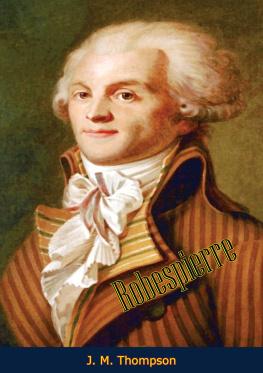
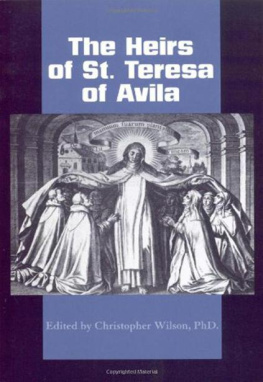

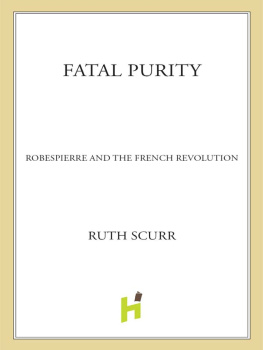

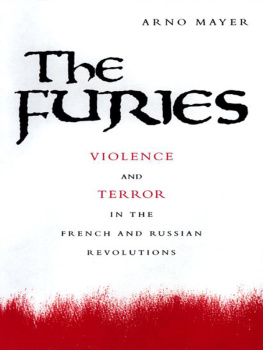
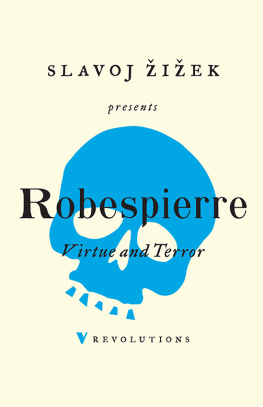
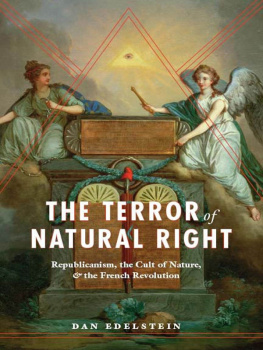
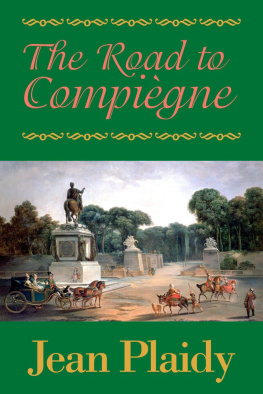


 16 November 1998
16 November 1998